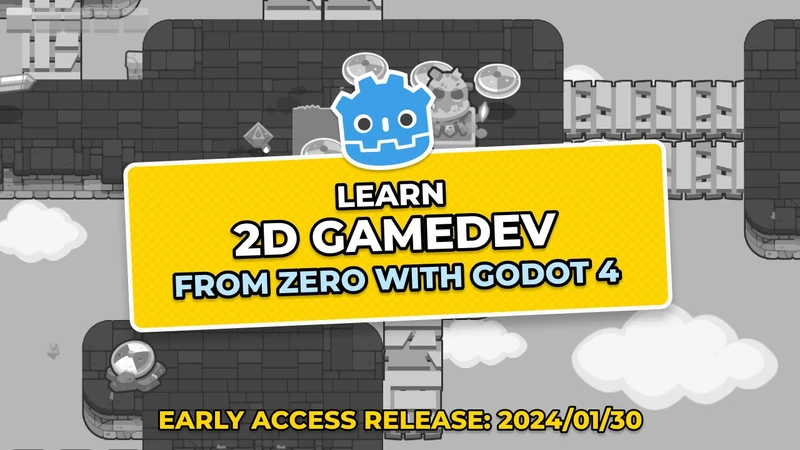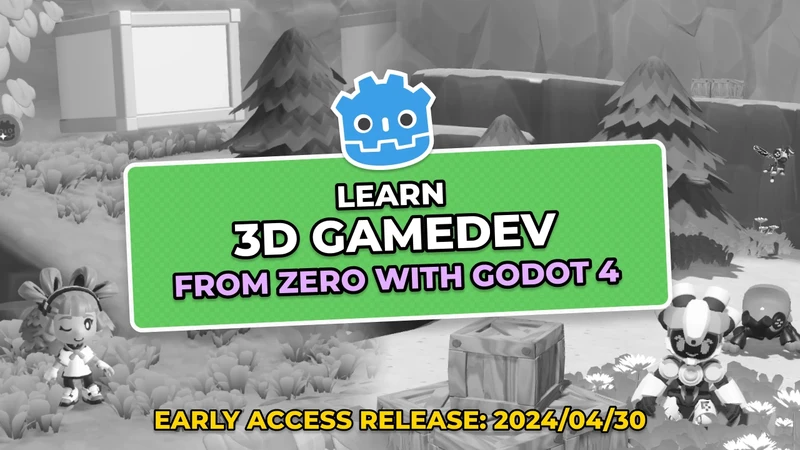Introduction
Even when you work alone on a project and code everything, you do not code for your eyes alone.
Days, weeks, months, or years into your project, you may need to track down an elusive bug or refactor an old system. You may be the one who coded it in the first place, but memory is a fickle thing; the odds of you remembering what each abbreviated, shorthanded variable name means or what a block of ambiguous logic means is low.
While it may make your code more verbose, it becomes easier to read, remember, and follow its logic by looking at variable names and functions.
On the other hand, if the code is clean and explicit, refamiliarizing yourself with it will be a lot easier. You don’t code just for yourself, but your future self too.
Help your future self. You’re their only hope.
Keep function and variable names readable and descriptive
Abbreviations, shorthand, and ambiguous names can save typing time but demand more brainpower if you forget what it meant down the line or if someone else has to read your code.
The problem becomes even more evident when you take the piece of code out of context, like when showing it to someone or asking for help on a chat server.
if not rcvs_p.has(c):
rcvs_p[c] = min(apow, rpow)
else:
rcvs_p[c] += min(apow, rpow)
apow -= rpow
Use actual, descriptive names where possible to make the logic more opaque and obvious. We are no longer coding on terminals of 80 characters or struggling with keeping code under 1 kilobyte of space.
if not receivers_already_provided.has(cell):
receivers_already_provided[cell] = min(available_power, power_required)
else:
receivers_already_provided[cell] += min(available_power, power_required)
available_power -= power_required
Some codified examples have well-understood shorthands already. When iterating through an array’s indices, you do not need to rename a simple i to index, or rename mathematical constants if it does not help readability.
for i in vertex_indices:
#...
Wrap ambiguous conditionals inside nicely named variables
Consider the following condition for an if statement:
if _gui.blueprint and _gui.blueprint.placeable:
if not _simulation.entity_tracker.entities.has(cellv) and get_global_mouse_position().distance_to(_player.global_position) < MAXIMUM_WORK_DISTANCE and _ground.get_cellv(cellv) == 0:
#...
If you are intimate with the code base, you may know what each of those conditions implicitly means. But if you leave the project to sit for days, weeks, or months before returning to this line of code, or someone else comes in and takes a look at it, it means minutes or more tracking down what each stipulation implies.
If the condition is ambiguous about its meaning, split it up into clear, well-labeled variables.
var has_placeable_blueprint: bool = _gui.blueprint and _gui.blueprint.placeable
var is_close_to_player := (
get_global_mouse_position().distance_to(_player.global_position) < MAXIMUM_WORK_DISTANCE
)
var cell_is_occupied := _simulation.entity_tracker.entities.has(cellv)
var is_on_ground := _ground.get_cellv(cellv) == 0
if has_placeable_blueprint:
if not cell_is_occupied and is_close_to_player and is_on_ground:
#...
Here are some guidelines to find readable names:
- Use nouns for data and verbs for functions. For example,
var weapons: Arrayandfunc walk_along_path(). This helps to distinguish the two at a glance and will be especially useful with first-class functions in Godot 4.0. - Consider using a prefix for booleans:
has_placeable_blueprintinstead ofplaceable_blueprint. This clarifies that the value is eithertrueorfalseand that it couldn’t reference a node or some other data. - Use the past tense for signals in Godot: they represent events that already occurred. For signals that represent the start or the end of a chain of events, we append “_started” or “_finished” to the name.
- For classes and nodes, try to find names that instantly tell what their responsibility is. For example, in our tower defense demo, the node that places towers on the grid is named
TowerPlacer.
Keep indented blocks shallow
Having nested if statements or loops is inevitable in some cases, but you can keep your code looking a lot tidier by trying to keep as much of it as possible lined up with the left margin as possible.
The more indentation levels you have in a script, the more your eyes have to jump around to read and understand the code.
Limit the number of if statements inside if statements: you can rewrite certain condition chains into a single if. You can wrap or statements inside parentheses to maintain the logic, whereas you can chain and statements.
Instead of this:
if gui.window.fuel or available_fuel > 0.0:
if gui.window.ore:
if work.available_work <= 0.0:
#...
You can write the condition on a single line.
if (gui.window.fuel or available_fuel > 0.0) and gui.window.ore and work.available_work <= 0.0:
#...
When you have many conditions and the line becomes difficult to read, you can use a variable to describe it.
var can_build: bool = (
(gui.window.fuel or available_fuel > 0.0) and gui.window.ore and work.available_work <= 0.0
)
if can_build:
#...
You can do the same with functions. If the function only works on certain conditions, you can invert your if statement and return early.
Avoid the following.
func _unhandled_input(event: InputEvent) -> void:
if not screen_fader.is_playing:
if event is InputEventKey or event.is_action_pressed("thrust_forwards"):
#...
Instead, you can do this.
func _unhandled_input(event: InputEvent) -> void:
# Only run the function's body if the screen_fader is stopped.
if screen_fader.is_playing:
return
if event is InputEventKey or event.is_action_pressed("thrust_forwards"):
#...
Prefer calls to named functions over nested logic
Try to keep functions doing more or less one job. For example, _unhandled_input’s job is to detect and parse user input and do something on specific inputs.
Its role is not to place an entity and update the neighboring entities.
Avoid putting a lot of code in an unrelated function like so.
func _unhandled_input(event: InputEvent) -> void:
#...
if not cell_is_occupied and is_close_to_player and is_on_ground:
var blueprint: BlueprintEntity = _gui.blueprint
var blueprint_name: String = Library.get_filename_from(blueprint)
var new_entity: Node2D = Library.entities[blueprint_name].instance()
for neighbor in Types.NEIGHBORS.keys():
var key: Vector2 = cellv + Types.NEIGHBORS[neighbor]
#etc...
Instead, extract the logic inside functions to do that job, and have the original call those functions.
Give the new functions descriptive names so that, at a glance, you can tell what happens on which input. Coupled with wrapping your conditions inside descriptive variables and you can almost read the code like English.
func _unhandled_input(event: InputEvent) -> void:
#...
if not cell_is_occupied and is_close_to_player and is_on_ground:
_place_entity(cellv)
_update_neighboring_flat_entities(cellv)
Reduce repetition: cache values
If you have a particular conditional, value, or lookup you frequently use in a function’s body, you can make your code more readable by caching it ahead of time instead of repeating it.
var has_placeable_blueprint: bool = blueprint and blueprint.placeable
var cell_is_occupied := _simulation.is_cell_occupied(cellv)
var is_on_ground := _ground.get_cellv(cellv) == 0
var is_close_to_player := (
global_mouse_position.distance_to(_player.global_position)
< MAXIMUM_WORK_DISTANCE
)
if event.is_action_pressed("left_click"):
if has_placeable_blueprint:
if not cell_is_occupied and is_close_to_player and is_on_ground:
_place_entity(cellv)
_update_neighboring_flat_entities(cellv)
elif cell_is_occupied and is_close_to_player:
var entity := _simulation.get_entity_at(cellv)
if entity and entity.is_in_group(Types.GUI_ENTITIES):
_gui.open_entity_gui(entity)
_clear_hover_entity()
This also results in better performance, especially for expensive calls like get_node() (or its shorthand $).
Add blank lines between groups of relevant lines of code
A bit of breathing room will go a long way towards improving the readability. Consider the difference between the following two blocks of code. One breathes a little more and keeps the eye from glazing over as much.
if event is InputEventMouseButton:
_abort_deconstruct()
var global_mouse_position := get_global_mouse_position()
var blueprint: BlueprintEntity = _gui.blueprint
var has_placeable_blueprint: bool = blueprint and blueprint.placeable
var is_close_to_player := (
global_mouse_position.distance_to(_player.global_position)
< MAXIMUM_WORK_DISTANCE
)
var cellv := world_to_map(global_mouse_position)
var cell_is_occupied := _simulation.is_cell_occupied(cellv)
var is_on_ground := _ground.get_cellv(cellv) == 0
By adding extra lines, we can visually group logic and read it more easily.
if event is InputEventMouseButton:
_abort_deconstruct()
var global_mouse_position := get_global_mouse_position()
var blueprint: BlueprintEntity = _gui.blueprint
var has_placeable_blueprint: bool = blueprint and blueprint.placeable
var is_close_to_player := (
global_mouse_position.distance_to(_player.global_position)
< MAXIMUM_WORK_DISTANCE
)
var cellv := world_to_map(global_mouse_position)
var cell_is_occupied := _simulation.is_cell_occupied(cellv)
var is_on_ground := _ground.get_cellv(cellv) == 0
When commenting code, avoid obvious comments
Comments are useful, but they should be helpful and not get in the way or make your codebase more cluttered. Use them when the code is not evident and when descriptive variable or function names are not enough.
Avoid commenting lines that are obvious from reading the code, such as in the following.
# Converts the global mouse position from world to map coordinates.
var cellv := world_to_map(global_mouse_position)
# Places the entity at the mouse map coordinates
_place_entity(cellv)
The comments above paraphrase the code. Even worse, comments add maintenance work and tend to fall out of sync with the code. Over time, they can turn into lies.
That’s why you want to avoid superfluous comments. Use them sparingly, when they help to understand the code better.
Splitting logic into functions and using descriptive names greatly reduces the need for comments as it reduces the amount of ambiguous code.
Limit line length
Unavoidably, some lines are going to become long. While you should not be too concerned about line length, a good practice is to keep lines of code below 100 characters. Going a little over is fine, but if you exceed it by a large margin, use parentheses and parameters to break up the line.
func _get_direction() -> Vector2:
return Vector2(
(Input.get_action_strength("right") - Input.get_action_strength("left")) * 2.0,
Input.get_action_strength("down") - Input.get_action_strength("up")
).normalized()
A code formatter will do that for you automatically. For GDScript code, you can use gdformat.
Made by
François Bélair
One-man-army sort of game dev; have been doing programming for over two decades, and helping others out with that experience's always been rewarding.

